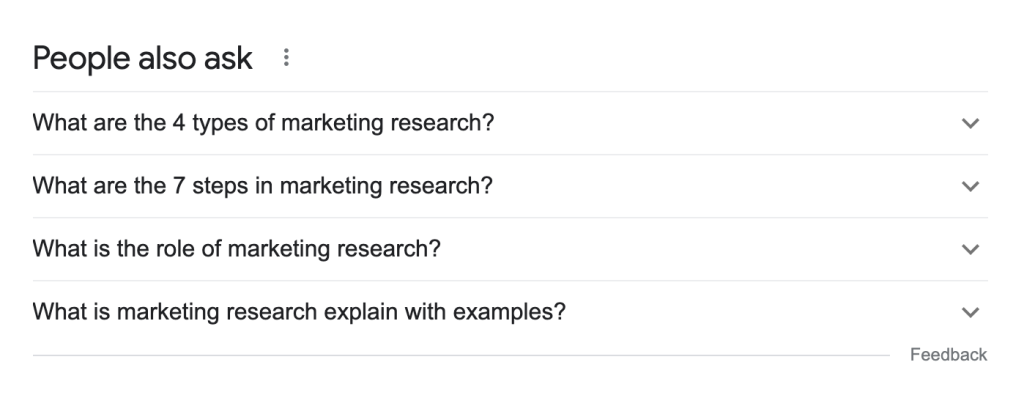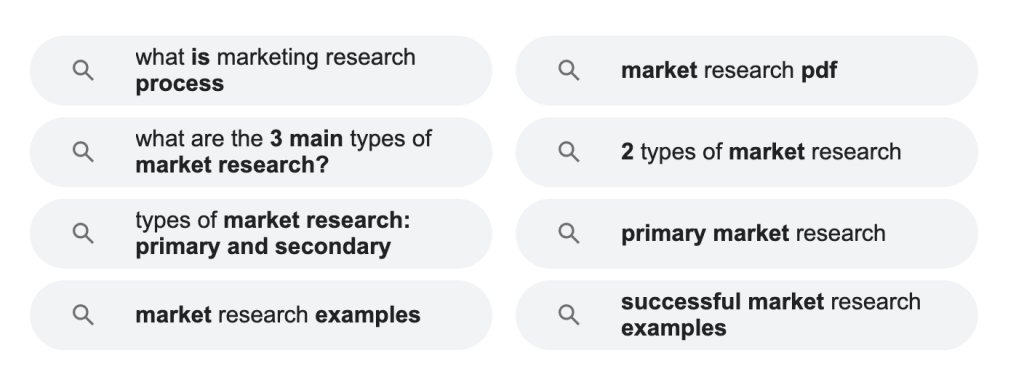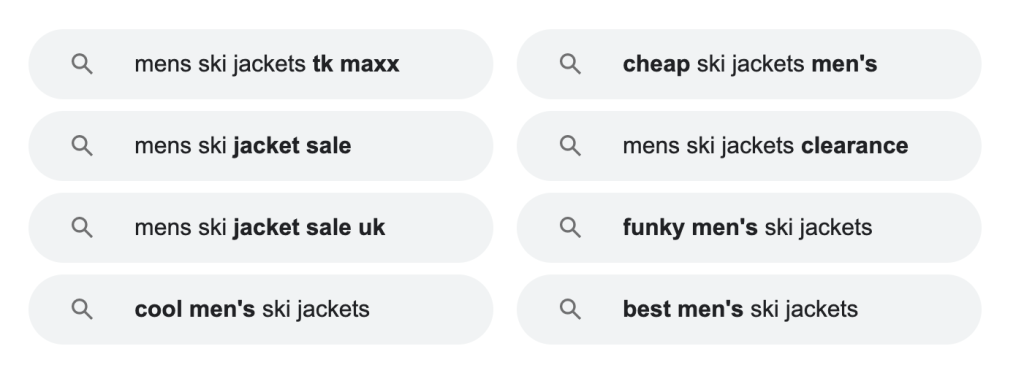If you’re in digital marketing, you already know that long tail keywords are often held up as the goose that lays the golden egg. These search terms can be low competition and low volume, but high converting.
Basically, search engine gold.
Well, that’s the theory anyway.
Granted, it doesn’t always work like that. But understanding how to find long tail keywords, and how to use them, can reap some serious dividends for your digital marketing strategy.
What the hell am I talking about?
Allow me to explain.
What are long tail keywords?
Theoretically, any search term that is more than 3 words long is classified as a long tail search term. Most often they are between 3 to 5 words, although they can be longer.
They should also be niche specific, effectively narrowing down a search to a focused result.
For example, “holiday home” is a very broad search term, with 33,000 monthly searches (according to Ahrefs – Keywords Everywhere says 135,000).
However, “Holiday home rental Tuscany” brings in a much lower search volume, essentially under 100 searches a month (or 480 if you ask Keywords Everywhere).
But, now we’re talking to people who are looking for a very specific thing.
This form of long tail keyword normally revolves around your main search terms, or head keywords. Simply take your main search term and add a modifier.
Another good example of a long tail keyword is a question, or other more specific enquiry. For example:
- “Where is the best town for walking holidays in Tuscany?”
- “When is the best time to visit Tuscany?”
- “Does Tuscany have nice beaches?”
As you might notice from these search terms, long tail keywords can be questions – in fact this can be a very good way to find them.
And although these search phrases don’t contain the main keyword, they do imply a specific intent from your audience. And being less competitive, you stand a better chance of ranking higher in the search engine results.
They can also be useful for focusing on voice activated searches. Focusing on voice activated search in some industries, such as on-demand or local services (plumbers, food delivery), could bring in some useful traffic.
But as we’ll see, long tail keywords offer a number of opportunities and can be used at different stages of the customer journey.

When do you use long tail keywords?
As we’ve seen from the ‘Holiday homes’ example, the long tail search term brings in people searching for a specific thing. You’re eliminating the huge volume of searches for the general keyword, and focusing instead on people who are, most likely, in the deep research or decision stage of their purchasing journey.
It should be noted that long tail keywords are well suited to paid search results, such as Google Ads.
Long tail search terms are also great for organic rankings. Although of course, there is the challenge of ranking for your search term, and the time scale involved. But paying for those long tail keywords means you can quickly hit top spot.
Broad search terms offer their own pros and cons. In general, if you’re trying to watch your budget (and who isn’t), broad search terms are much better suited to organic search. Although there is a whole other problem with competition for rankings.
So for those 33,000 searches for “holiday homes”, you’ll be competing with tourism behemoths like Airbnb and Booking.com. Which also means you’ll be paying big bucks to appear in the rankings for a high competition and high volume keyword.
So adding a location, season or value modifier can help to narrow down the searches.
- “Summer holiday home Italy”
- “Christmas holiday villa near Florence”
- “Holiday home deals Italy”
- “Family vacation homes near Siena”
Yes, you’ll still be competing with the big guns. But…. You’ll be thinning down the search volume and you’ll be targeting specific searches, and therefore people who (theoretically at least) know what they’re looking for.
So that is long tail keywords.
How do you find them?
How to find long tail keywords
There is actually no mystery to finding long tail keywords – you just gotta know where to look. There is no getting around that it all comes down to some digital marketing basics such as:
- Understanding your target audience
- Researching your competition
- An awareness of the language used to find your product or service
These are all marketing prep techniques that come pretty much as standard.
So how do you find those long tail search terms?
Search modifiers
As we saw above, standard search terms, or your head keywords, make a good foundation for your long tail keywords. Adding modifiers such as value or seasonal add-ons can help to turn your broad search term into a long tail search term.
These are usually common search modifiers, helping people to find a specific solution to their query.
For example “cheap”, “best”, “sale” or “summer”.
- “Best womens running shoes”
- “Cheap fireplace surround”
- “Winter vacation deals Mexico”
Answer a question
Another great way to find those long tail keywords is to provide the answer to common questions related to your industry.
Again, we saw these above. For example:
- “Where is best for a family vacation in Costa Rica?”
- “How long does it take to learn Japanese?”
- “Which car has the best fuel economy?”
Ask yourself what the common (or less common) questions are around your industry and you have a good list of long tail keywords.
If you’re struggling to think of any, a very useful keyword research tool is Answer the Public. This helps you visualise questions related to certain search terms. It’s a free tool with some useful paid features and definitely worth trying out if you’re doing any keyword research.
Use Google
When you search Google, they actually add some useful suggestions around the search results page.
For starters, you often have the featured snippets section, or the ‘People also ask’. These are usually common questions answered with a highlighted section from a well written website – or they should be.
These snippets can be a goldmine of long tail keyword suggestions.
Take for example this ‘people also ask’ section:

As you’ll see, this presents some interesting expansions on the original query ‘marketing research’.
But, if you click one of the searches, you’re able to then search that query and find even more long tail keyword suggestions… Like this below.

And so on and so on, until you fall out of the rabbit hole back into your office chair.
Oh wait. I’m not finished.
Google also has a section at the bottom of the search engine results page which lists ‘other searches’.
Example:

And yes, you guessed it. You can click on these queries to then see even more results and suggested long tail searches.
Use Google’s tools
Google is obviously happy to load you up with free tools to get you researching and ready to spend big bucks on your ad campaigns.
To that end, they have a number of free keyword research tools, including:
- Google Trends
- Keyword Planner
- Google Search Console
Each of these offer some useful insight into user searches, allowing you to dig deep for free.
Find out more about keyword research in our in-depth guide.
Use keyword research tools
The list of keyword research tools grows longer by the day. But the truth is, they’re worth the price of the subscription.
The top tier tools are packages like Ahrefs, SEM Rush, Majestic and Moz. These allow you to conduct some deep research into your search traffic and your competitors, and are, frankly, essential for serious marketers.
If you can’t quite bring yourself to shell out $99 (at least) each month, there are some cheaper options like Long Tail Pro and KW Finder that might be worth checking out.
UberSuggest also offers a limited free package as well as some nicely priced ‘lifetime’ packages which can be very useful if you’re just running one website.
Go deep on social media
As part of any keyword research, social media can be a goldmine. If you can avoid getting too distracted…
If you can block out the baby spam, memes and temptation to start trolling people, here is how to use social media to find keywords:
- Search products or terms associated with your industry. Make a note of what questions people are asking, what is being shared, complaints and any other relevant social activity.
- Check your competitors social media pages to see what they’re sharing or how their customers are interacting with them.
- Search your obvious hashtags, and take note of other related hashtags or terms that you might not already be using.
PPC vs SEO
The benefit of long tail keywords is that they can be used to target a specific segment of search traffic – people at a particular point in their journey.
But this doesn’t limit you to paid traffic or organic traffic.
There is nothing to say that you shouldn’t target both. In fact, it’s recommended that you do.
With your new found spreadsheet of long tail keywords, create a list of content (blogs, social media posts, videos etc) that you can create to target these searches.
And, while waiting for that traffic to come in via organic search (which can take aaaaaages), you can hit the SERPs with your paid ads too.
Be sure to have well structured landing pages for your search terms. You can then link your organic content to the landing page too, which should even help it rank quicker in the organic SERPs.
Are long tail keywords cheaper?
You might think that a more targeted search term would be more affordable. But, alas, you’d be wrong.
Those broad search terms, with high volume and relatively low conversions ‘Holiday home’/’marketing tools’, actually tend to be cheaper than long tail keywords.
Using Keywords Everywhere for my data here, the search terms for holiday homes look like this:
- Holiday home: vol, 110,000 cost $0.98
- Holiday home Tuscany: vol, 480 cost $3.10
- Villas for rent in Italy: vol, 5,400 cost $2.95
Get specific, pay more per click.
This is due to the increased likelihood of a conversion from these keywords. After all, these are searches near the money end of the funnel.
Keeping your ad campaigns targeted is one of the best ways to keep costs down and to minimise your exposure to click fraud. In fact, many professional PPC managers won’t run any campaigns that target broad search terms precisely because of the low conversions.
Yes, you’re paying less per click. But you do end up paying much more per conversion, with the volume of clicks to win one new customer.
Add to this the risk of click fraud on broad search terms, and it’s an obvious strategy to go for the lower volume clicks.
Wait… Click what??
Ah yes, click fraud. It’s become uncomfortably clear to pretty much anyone in digital marketing that click fraud is an issue. In fact it’s a multi-billion dollar issue and one that doesn’t seem to be going anywhere.
Put simply, click fraud is any non-genuine click on your paid ads. This means clicks from:
- Bots and web scrapers
- Accidental clicks
- Vindictive clicks from haters or competitors
- Bad ad placements or fake impressions
Data shows that around 1 in 4 clicks on PPC ads are from non-genuine traffic sources.
Meaning that if you’re running paid search, display or any other digital ad campaign, around a quarter of your ad budget is wasted.
The problem is, of course, that for many businesses, PPC ads are an important source of traffic. How else can you build your brand visibility and get more clicks quicker?
So blocking click fraud has grown from a niche concern to an important part of any digital fraud prevention strategy.
You can read more about click fraud in our in-depth guide here.
How to use long tail keywords
So now that you’ve found loads of long tail search terms and niche queries, what can you do with them?
Of course it will depend on your business goals. But, I’m willing to guess that you want more web traffic and more customers in some capacity.
So, we’ll break it down by PPC and SEO campaigns.
Long tail keywords in PPC
Create campaigns targeting specific stages of your customer journey. For example, structure your ad campaigns to target people who are researching your product and those that are looking to buy.
Research focused terms will most likely be things like:
- Where is the best…
- How can I find…
- What can I do…
Purchase focused search terms will most likely look like:
- Best value…
- (search term) with free shipping
- (search term) with free trial
*Obviously not an exhaustive list, just a serving suggestion.
With these focused campaigns, you’ll need well written ad copy that answers these questions and speaks to the customer.
It will also be more beneficial to create landing pages designed to speak directly to these long tail queries.
People searching for “Where is the best place in Italy for a family vacation”?
Make sure your landing page with your family friendly villas in Tuscany pops!
Long tail keywords in SEO
Hitting those long tail keywords in a blog is also a great idea. Effective SEO is a whole other subject, but there is no harm in creating blog posts that target the same audience you’re targeting with your paid campaigns.
This is especially true for competitive search terms or phrases.
Organic search results do cost money and time (writing up the posts, researching, optimising and generating a buzz on your social media pages). But it’s a worthwhile investment in the long run.
Get yourself a good content writer, or content strategist, and look at how you can get ranking for your long tail search queries.
The tail-end of this blog post
And that is how you do long tail keywords…
TL;DR?
A quick summary for you then:
- Find questions, or queries, related to your industry.
- Add modifiers such as ‘best value’ or ‘free shipping’ to your main or head keywords.
- Use research tools to uncover popular searches.
- Dig deep on social media, the SERPs and your competitors pages for more keywords.
- Reduce the chances of click fraud on your ads by using ClickCease (less bad clicks=more real customers)
- Create specific campaigns targeting different stages of the customer journey with your long tail search queries.
- And use landing pages too.
If you’re looking for an effective way to maximise your search reach, both with broad keywords and long tail queries, try blocking invalid traffic.
ClickCease is the industry leading click fraud prevention software, stopping bots, bad clicks and other forms of IVT on Google Ads, Facebook Ads and Bing Ads.
Sign up for a free trial today and find out how much you could save each month.
Got any tips for finding long tail search queries? Or any thoughts on the subject of maximising your paid search budget?
Drop a comment below and let us know.
